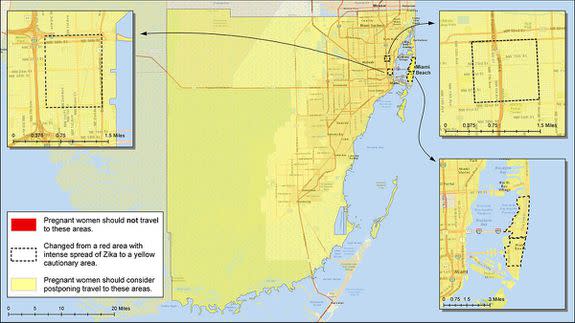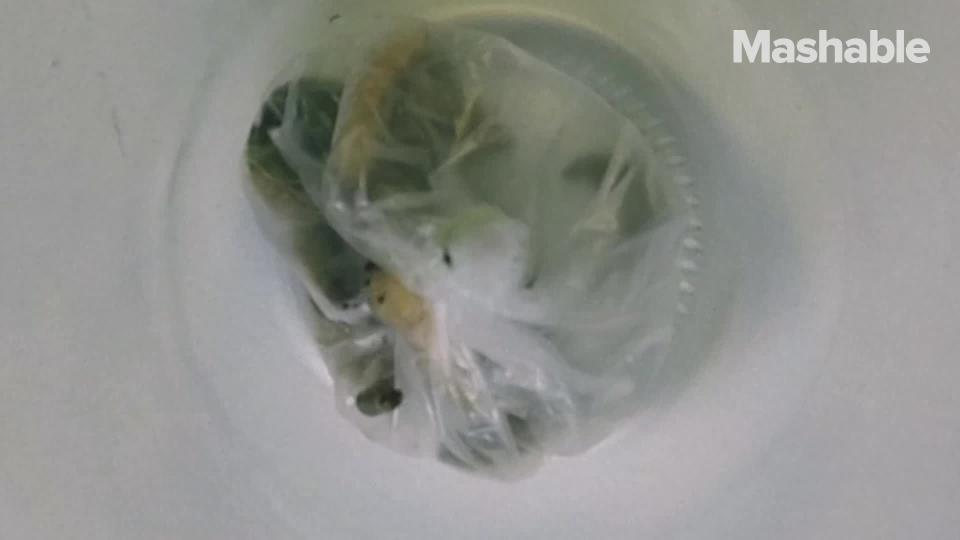How the Zika virus stealthily swept the Americas

Nearly a year since the Zika virus outbreak arrived in Miami, scientists say they've learned new details about how the mosquito-born virus emerged and spread throughout the Americas.
Researchers sequenced nearly 200 Zika virus genomes to see how the virus mutated and traveled over time. These genetic blueprints shed new light on a poorly understood epidemic that's affected thousands of people in recent years.
"We used [genomes] to investigate the timing and path of how Zika spread in a way that had not yet been possible, until now," Browyn Macinnis, an associate director at the Broad Institute of MIT and Harvard, said this week on a press call.
SEE ALSO: This frog's slime can destroy flu viruses
Macinnis is the lead author of one of three Zika-related papers published in the journal Nature on Wednesday. All studies found the virus spread unnoticed for many months before transmission was detected.

Image: mario tama/Getty Images
Zika is an RNA virus that mutates and evolves at a fairly high rate, which makes its genetic data like a trail of bread crumbs that scientists can follow. For the studies, researchers collected Zika virus genomes from infected patients and Aedes aegypti mosquitos in 10 countries.
The studies detailed where the Zika outbreak began and how it moved across the region.
The virus likely began circulating in northeast Brazil around late 2013 or early 2014 – months before it was detected and an outbreak established. Soon, local mosquitos began transmitting the virus to Brazilians, including pregnant women. That likely spurred a rise in newborns with microcephaly, or an unusually small skull.
From northeast Brazil, Zika traveled south to major population centers, including São Paulo and Rio de Janeiro, and spread throughout South America, Central America, and Caribbean countries. The Caribbean was Zika's main pathway to the continental United States, where the virus also circulated undetected for several months.

Image: mario tama/Getty Images
Zika likely arrived in Florida in the spring of 2016, though the first cases of local mosquito-born transmission weren't reported until July, said Kristian Andersen, a lead author on one of the Nature studies and an assistant professor at the Scripps Research Institute.
The leap from Caribbean to continental U.S. likely happened around 30 to 40 times, meaning it wasn't a lone mosquito that sparked the outbreak.
"It's not a one-off event. This is something that keeps happening over and over again," Andersen said on the press call.
In Florida, 218 cases of Zika were acquired through local mosquito-born transmission last year, according to the Centers for Disease Control and Prevention (CDC). Six additional cases were acquired locally in Brownsville, Texas.
Another 4,830 cases were reported across the U.S. last year, but all of those were travel-related infections, meaning people acquired the virus while visiting another country, the CDC reported. Forty-six more cases were acquired through sexual transmission.

Image: CDC
Andersen said the Miami and Brownsville areas face the highest risk of a Zika outbreak, while remaining swaths of the continental U.S. are unlikely to see a significant outbreak.
That's because southern Florida and parts of southern Texas have a year-round population of Aedes aegypti mosquitos, the main species that transmits Zika and other viruses like dengue and chikungunya. In the rest of the country, the mosquitos only appear during certain months, giving them fewer opportunities to spread the virus.
Miami is also a major destination for people living in Caribbean countries, where the Zika virus thrived.
Local officials in the U.S. and throughout the Americas have since taken drastic steps to limit the Zika outbreak, including by spraying insecticides and issuing travel warnings for pregnant women in affected areas.
Scientists are still working to develop a vaccine for the Zika virus, although the new genome sequences reported on Wednesday may help advance that research. The sequences reveal parts of the virus likely to mutate and resist the vaccine, Andersen said.
"We need to know what the virus looks like so we can target the vaccine against that," he told reporters. "Sequencing gives you the blueprint of the virus."
WATCH: These worms may solve the plastic waste problem


